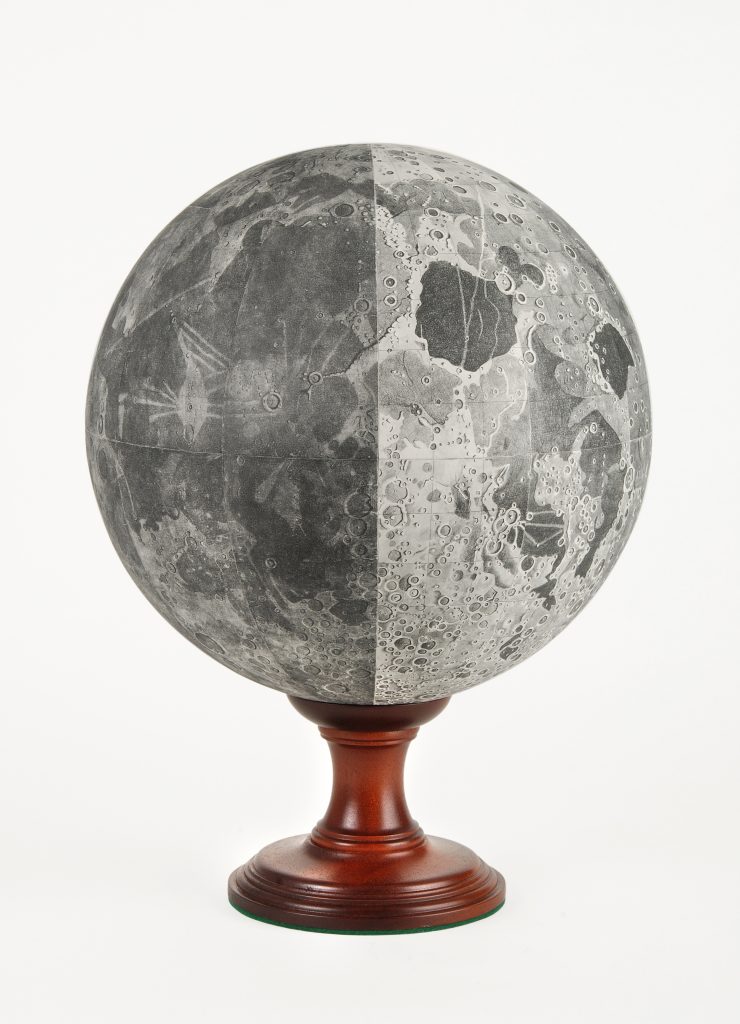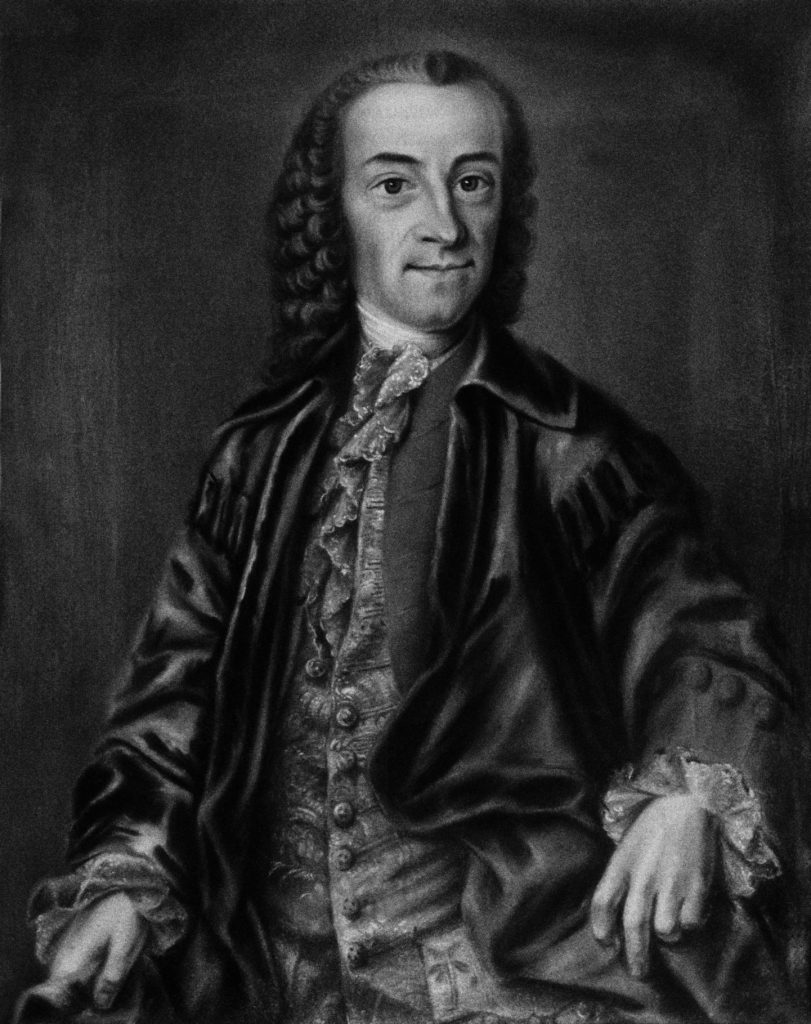
Of the 12 globe segments, 6 copper plates and 8 hand drawings were preserved. Of 4 segments are the templates missing.
Sonja Pleuger and Tobias Mayer Association, Marbach, 2005.
Tobias Mayer, Report from the moonballs, Nuremberg, 1750
„Those who once had the curiosity to show themselves the moon through good binoculars at night, will undoubtedly fall into a pleasant ecstasy by this sight, and if they have not had too much insight into astronomy, they must nevertheless have been content to have seen something of which they had hardly believed to be as able to see before. And indeed, who should not be touched, when one is accustomed to a corpus, which one is accustomed to seeing in youth, and which is scarcely worthy of to watch it, as I say, it is a pleasure to discover a new world on the moon. One sees in it a lot of elevations and depressions, large and small flat surfaces, one is funnily forced to call them mountains, valleys, flat land and also for instance seas and lakes. One sees how these mountains are enlightened at their summits, and how they shade their adjoining valleys. In a word, one sees on the surface of the moon no less variety than our earth has, or as we would perceive it, if it were as far from our eye as the moon is. Let it be said of the astronomers that they are able to measure the height of the mountains of the moon, how deep the valleys are, and how spacious their flat planes are; and if one hears from them that these things are not smaller than those on earth, but some surpass them for some extent: thus one will take no modicum with the astronomers to truly hold the moon for an earth, and worship the same faith, if they bear the drive of the resemblance of these two bodies even further.

Background-Infomation
In connection with his research on astronomical length determination, it was necessary for Mayer to have a as accurate as possible lunar chart. A comparison of his map with a current moon map and a satellite photo of the moon shows that he was very successful.
In connection with his research on astronomical longitude determination, it was necessary for Mayer to have a as accurate as possible lunar map. A comparison of his map with a current moon map and a satellite photo of the moon shows that he was very successful. Mayer’s map of the moon remained unsurpassed in its accuracy for 100 years. Among other things, it contains, for the first time longitude and latitude grit, so-called selenographic coordinates. Around 1748 Tobias Mayer (1723-1762) began working on a moon globe and two years later he published his report on the so called “Moonballs”, which are produced at the cosmographic society in Nuremberg […]. The collapse of the „Cosmographic Society“ meant that the moon’s globe remained unfinished. Using the material obtained (six original plates, eight preliminary drawings and the small moon map Mayers), the Tobias Mayer Association in Marbach in collaboration with the workshop ARS MECHANICA (Dr. Günther Ostmann und Dr. Felix Lühning) in Bremen, the moon globe of Tobias Mayer were reconstructed and published in 2009. Globes were made using traditional, contemporary techniques, with the globe gores mounted on custom-made 39.5 cm diameter plaster casts. The moon globe is equipped with vertical axis on a turned wooden foot. The 25 globes are now distributed throughout the world. So are copies e.g. in Mecca or at the British Library in London. Also in many observatories there are now a copy of this unique globe available. Since every single one was made in absolute handcraft, using methods from the 18th century, one can certainly call each one a unique piece. Mayer’s map of the moon remained unsurpassed in its accuracy for 100 years. Among other things, it contains, for the first time, longitude and latitude circles, so-called selenographic coordinates. Around 1748 Tobias Mayer (1723-1762) began working on a moon globe and two years later he published his report on the so called “Moonballs”, which are produced at the cosmographic society in Nuremberg […]. The collapse of the „Cosmographic Society“ meant that the moon’s globe remained unfinished. Using the material obtained (six original plates, eight preliminary drawings and the small moon map Mayers), the Tobias Mayer Association in Marbach in collaboration with the workshop ARS MECHANICA (Dr. Günther Ostmann and Dr. Felix Lühning) in Bremen, the moon globe Tobias Mayer were reconstructed and released in 2009. Globes were made using traditional, contemporary techniques, with the globe strips mounted on custom-made 39.5 cm diameter plaster casts. The moon globe is equipped with vertical axis on a turned wooden foot. he 25 globes are now distributed throughout the world. So are individual copies e.g. in Mecca or at the British Library in London. Also in many observatories is now a copy of this unique available. Since every single one was made in absolute handcraft, using methods from the 18th century, one can certainly call each one a unique piece.
